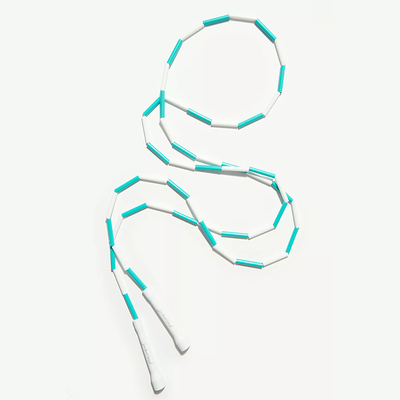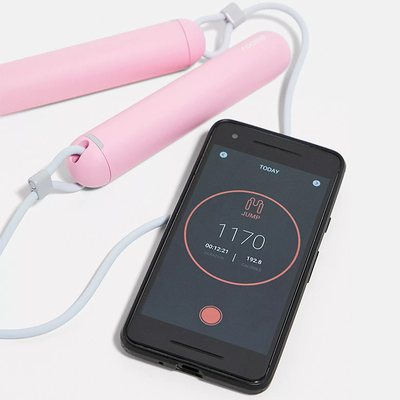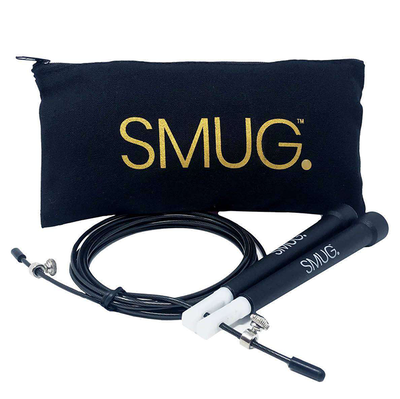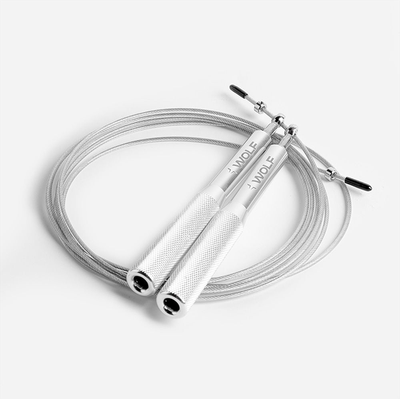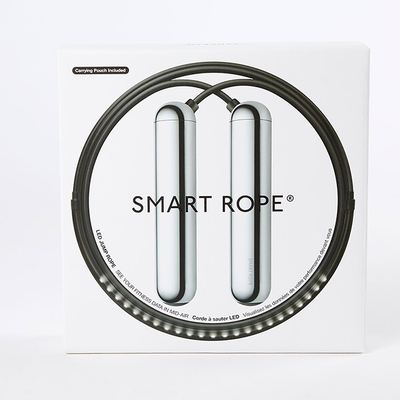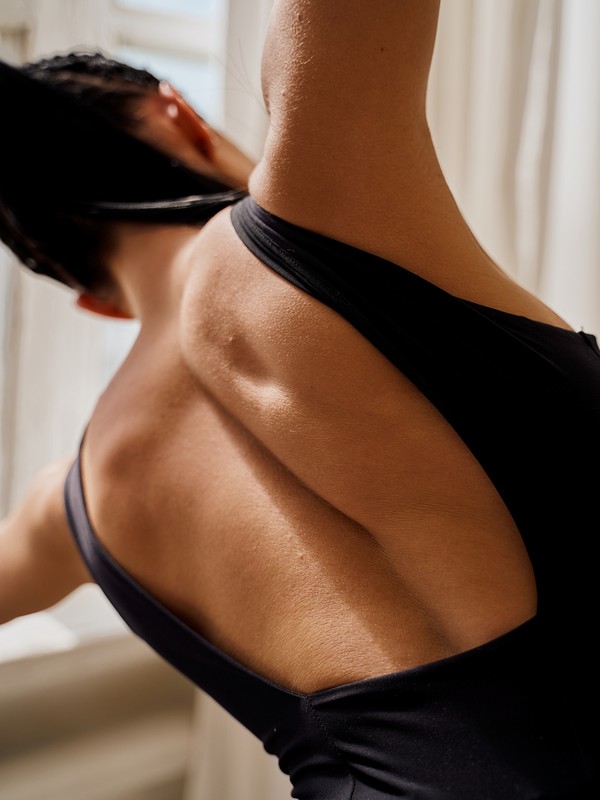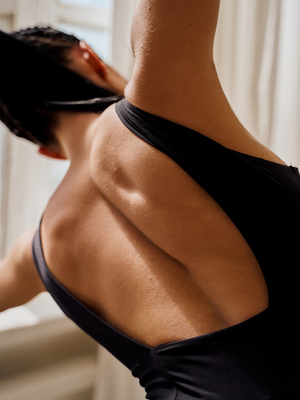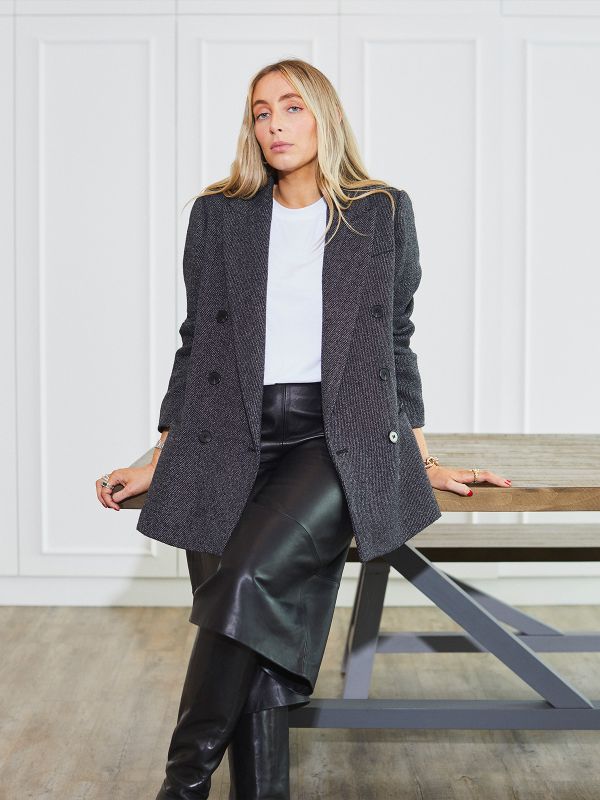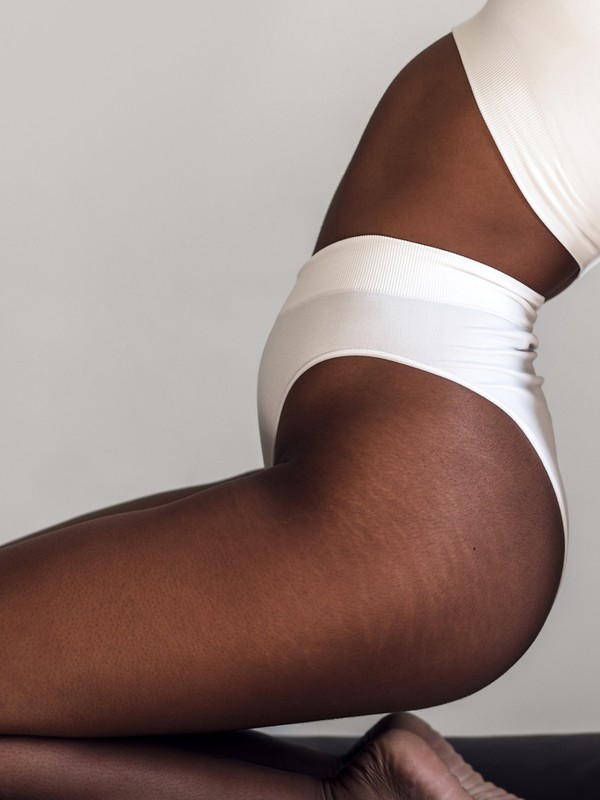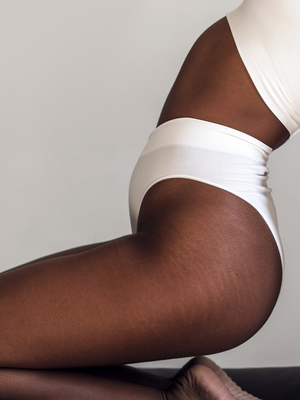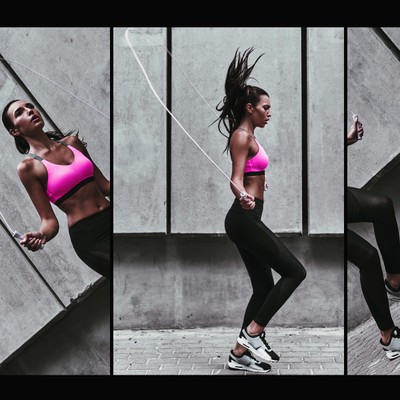
How To Work Out With A Skipping Rope
All products on this page have been selected by our editorial team, however we may make commission on some products.
First – what are the benefits of skipping?
Skipping ropes provide a full-body workout that burns serious calories. An efficient way to train with minimal space and equipment, it’s ideal for lockdowns and home workouts. As Michelle Morrey, group fitness manager at Equinox says: “The skipping rope is a small but mighty piece of equipment. Ropes will give you a powerful athletic workout and an intense bout of cardio – it’s powerful, fun and effective. Skipping helps build power and explosiveness, improves balance, endurance, coordination and footwork skills, and is also a great workout to support other forms of training, like boxing.” If that wasn’t enough, Michelle also explains the high-impact nature of skipping can help increase bone density, while more complex rope tricks also work to improve cognitive function.
How is it different to other forms of cardio?
Keon Ghaharian, founder of Dope Ropes, explains that skipping has the potential to increase fitness levels just as much as other forms of cardio. “Studies show that skipping for just ten minutes is the equivalent to running for 30 minutes, making it fantastic and efficient way to workout. It’s the best exercise modality for calorie burn per minute.” Plus, unlike a HIIT class, which can quickly take its toll on your body, Ian Robertson, personal training manager at Equinox Bishopsgate explains that skipping creates less wear and tear on the joints, meaning you can do it more frequently, and reap the benefits. “Skipping is different from your average cardio session thanks to fast adaptations. You’ll find skipping challenging if you’re new to it, and during the first month of a skipping routine, you’ll expend a lot of calories and will experience a sharp increase in performance in the first six weeks.”
What muscle groups does it target?
“Regularly incorporating a skipping rope into your regime will benefit your posture,” Michelle says. Plus, once you get the hang of it, you’ll start to feel it in your core, biceps, pecs, delts, lats and calves. Morrey’s top tip? Invest in a weighted skipping rope once you’re feeling confident, which will engage more muscles in the upper body, helping to tone your arms, shoulders and back.
Is there a right way to skip?
Yes – form is crucial. As Keon explains: “Your arms should be kept tight to the side of your body, your elbows should point backwards, and your wrists should be at around hip height. Ensure you rotate your wrists, too – lots of beginners have stiff wrists but if your arm positioning is on point then the wrist action will come naturally. Your jumps should also be no higher than one to three inches off the floor to only allow enough room for the thickness of the rope to pass under and the body should ideally make a straight line in the air from crown to foot.” Michelle also advises her clients to ‘float like a butterfly’ when skipping, staying light on your feet and keeping your jumps low to the ground. “Keep your knees soft and your abs tight, too,” she says.
If you find skipping tricky, what should you bear in mind?
“Slow down,” Keon advises. “Most people forget they’re in control of the speed of the rope. Start by seeing how many single bounces you can do without tripping, then try and add one more bounce each time. Keep your sessions short at first – ten minutes per day is plenty – while your muscles adapt to a new form of training and increase the length and frequency of your sessions over time.” If you’ve recently started skipping but are feeling sore, Keon says this is to be expected. “Skipping can put strain on your calves and quads, so always remember to stretch before and after. It’s important to understand that tight quads can pull on the ligaments around the knee joint.” He also says that practice makes perfect, so don’t give up if you’re struggling. “Skipping is muscle memory so you will find your rhythm the more you do it. It could also be helpful to review yourself and your form in a mirror or on film, which can help you spot things you may be doing wrong.”
Is there anything else beginners should know?
Before you get going, Keon stresses that adjusting the length of your rope is key. “So many beginners don’t shorten their rope when they first start. An excessively long rope leads to poor form and poor rope movement through the air. Shortening your rope, meanwhile, will lead to better arm positioning and will make things feel so much easier.” If you’re a total beginner, Keon says your rope length should be around your height plus 2.5ft-3ft, and if you can, shorten the rope more than this if you notice you have excess rope above the head and below the feet as you start jumping. As you progress, you should shorten the rope further – Dope Ropes has a handy guide to check out.
Once you’ve mastered the basics – how can you get a great workout from your rope?
If you’re a beginner, try using skipping as a way to warm up before strength training, or try a standalone workout, suggests Ian. “Find a comfortable pace and try skipping for two-minute intervals, resting for one minute in between. Keeping the intervals short can help you maintain form when you’re just starting out,” he advises. Once you’re feeling more confident, think about introducing more complex moves. “High knee runs will target your abs and double unders will significantly increase your output and effort level in cardiovascular terms,” Keon adds. “To take things up a level, you could try skipping for one minute followed by 15-20 seconds of rest, alternating your moves as you go: the basic bounce; running in place; high knees running in place; straddles (side and front); boxer steps; crossovers; and double unders all give a great workout.”
What should you look for when buying a skipping rope?
Your level of skipping expertise should dictate the type of rope you choose. As Keon advises, “If you’re a beginner, avoid light speed ropes (also referred to as wire-based ropes) and instead opt for a beaded rope, which offers more feel and feedback. A beaded rope also moves slower through the air, which makes it easier to practice tricks with. The weight of the beads allows you to better sense the arc of the rope around your body, which is great for beginners.” If you’re looking to level things up, Keon recommends trying a PVC rope, which move faster through the air, making them excellent for speed and faster footwork. Wire-based ropes, meanwhile, are better suited to the skipping experts, explaining why you’ll often see them in CrossFit gyms. “It’s also worth thinking about handle types,” says Keon. “Beginners should look for a rope with short handles, which will force better form and stricter hand positioning, but you can try longer handles once you’re feeling more confident. A longer-handled rope will make it easier to perform moves like crosses, crossover variations and more complex combinations.”
Get involved with SL’s pick of the best skipping ropes…
For more information, visit Equinox.com and DopeRopes.co.uk. Follow Dope Ropes on Instagram @Dope_Ropes.
DISCLAIMER: Features published by SheerLuxe are not intended to treat, diagnose, cure or prevent any disease. Always seek the advice of your GP or another qualified healthcare provider for any questions you have regarding a medical condition, and before undertaking any diet, exercise or other health-related programme.
INSPIRATION CREDITS: ISTOCK/G-STOCKSTUDIO
DISCLAIMER: We endeavour to always credit the correct original source of every image we use. If you think a credit may be incorrect, please contact us at info@sheerluxe.com.

